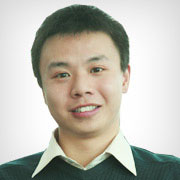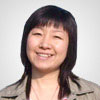┐╝Èç░╔ı¹└Ýí░2010─Û12È┬ËóıZ(y¿│)┴¨╝ë(j¿¬)┐╝Èç─úöMÈç¯}╝░┤░©í▒╣®ÅV┤¾┐╝╔·éõ┐╝╩╣Ë├����íú
³c(di¿ún)ô¶▓Ú┐┤ú║2010─Û12È┬ËóıZ(y¿│)┴¨╝ë(j¿¬)┐╝Èç─úöMÈç¯}╝░┤░©àR┐é
ííííPart I Writing (30 minutes)
ííííDirections: For this part, you are allowed 30 minutes to write a rsum. You should write at least 150 words following the outline given below:
íííí╝┘ÈO(sh¿¿)─Ò╩Ã└¯├¸¬¬í¬í¬Ê╗├¹æ¬(y¿®ng)î├«àÿI(y¿¿)╔·ú¼È┌ê¾(b¿ño)╝ê╔¤┐┤Á¢Ê╗ätıðã©ÅV©µ�����ú¼─Ò¤ÙʬÁ¢ÁÃÅV©µÁ─╣½╦¥╣®┬Ü����ú¼ıê(q¿½ng)¢oÈô╣½╦¥îæ(xi¿º)Ê╗ÀÔþ┬Üð┼����ú¼â╚(n¿¿i)╚¦æ¬(y¿®ng)║å(ji¿ún)ʬ¢Ú¢BÎÈ╝║Á─ÃÚørÊÈ╝░ÎÈ╝║Á─¢ø(j¿®ng)ÜvÁ╚���íú
ííííPart II Reading Comprehension (Skimming and Scanning) (15 minutes)
ííííDirections: In this part, you will have 15 minutes to go over the passage quickly and answer the questions on Answer Sheet 1. For questions 1-4, mark
ííííY (for YES ) if the statement agrees with the information given in the passage;
ííííN (for NO) if the statement contradicts the information given in the passage;
ííííNG (for NOT GIVEN) if the information is not given in the passage.
ííííFor questions 5-10, complete the sentences with the information given in the passage.
ííííAmerica's Brain Drain Crisis
ííííLosing the Global Edge
ííííWilliam Kunz is a self-described computer geek. A more apt description might be computer genius. When he was just 11, Kunz started writing software programs, and by 14 he had created his own video game. As a high school sophomore in Houston, Texas, he won first prize in a local science fair for a data encryption(¥Ä├▄┤a)program he wrote. In his senior year, he took up prize in an international science and engineering fair for designing a program to analyze and sort DNA patterns.
ííííKunz went on to attend Carnegie Mellon, among the nation's highest-ranked universities in computer science. After college he landed a job with Oracle in Silicon Valley, writing software used by companies around the world.
ííííKunz looked set to become a star in his field. Then he gave it all up.
ííííToday, three years later, Kunz is in his first year at Harvard Business School. He left software engineering partly because his earning potential paled next to friends who were going into law or business. He also worried about job security, especially as more companies move their programming overseas to lower costs. "Every time you're asked to train someone in India, you think, 'Am I training my replacement?'" Kunz says.
ííííThings are turning out very differently for another standout in engineering, Qing-Shan Jia. A student at Tsinghua University in Beijing, Jia shines even among his gifted cohorts(Ê╗╚║╚╦)at a school sometimes called "the MIT of China". He considered applying to Harvard for his PhD, but decided it wasn't worth it.üÝ(l¿ói)È┤ú║11ub.com
ííííHis university is investing heavily in cutting-edge research facilities, and attracts an impressive roster of international professors. "I can get a world-class education here and study with world-class scholars," Jia says.
ííííThese two snapshots(┐ýıı)illustrate part of a deeply disturbing picture. In the disciplines underpinning the high-tech economyí¬math, science and engineeringí¬America is steadily losing its global edge. The depth and breadth of the problem is clear:
íííí•Several of America's key agencies for scientific research and development will face a retirement crisis within the next ten years.
íííí•Less than 6% of America's high school seniors plan to pursue engineering degrees, down 36% from a decade ago.
íííí•In 2000, 56% of China's undergraduate degrees were in the hard sciences; in the United States, the figure was 17%.
íííí•China will likely produce six times the number of engineers next year than America will graduate, according to Mike Gibbons of the American Society for Engineering Education. Japan, with half America's population, has minted(ÞTÈý)twice as many in recent years.
íííí"Most Americans are unaware of how much science does for this country and what we stand to lose if we can't keep up," says Shirley Ann Jackson, president of Rensselaer Polytechnic Institute and chair of the American Association for the Advancement of Science. David Baltimore, president of the California Institute of Technology and a Nobel laureate, puts it bluntly:" We can't hope to keep intact our standard of living, our national security, our way of life, if Americans aren't competitive in science."
ííííThe Crisis Americans Created
ííííIn January 2001, the Hart-Rudman Commission, tasked with finding solutions to America's major national security threats, concluded that the failures of America's math and science education and America's system of research "Pose a greater threat...than any potential conventional war."
ííííThe roots of this failure lie in primary and secondary education. The nation that produced most of the great technological advances of the last century now scores poorly in international science testing. A 2003 survey of math and science literacy ranked American 15-year-olds against kids from other industrialized nations. In math, American students came in 24th out of 28 countries; in science, Americans were 24th out of 40 countries, tied with Latvia. This test, in conjunction with others, indicates Americans start out with sufficient smartsí¬their fourth-graders score wellí¬but they begin to slide by eighth grade, and sink almost to the bottom by high school.
ííííDon't blame school budgets. Americans shell out more than $440 billion each year on public education, and spend more per capita than any nation save Switzerland. The problem is that too many of their high school science and math teachers just aren't qualified. A survey in 2000 revealed that 38% of math teachers and 28% of science teachers in grades 7~12 lacked a college major or minor in their subject area. In schools with high poverty rates, the figures jumped to 52% of math teachers and 32% of science teachers. "The highest predictor of student performance boils down to teacher knowledge," says Gerald Wheeler, executive director of the National Science Teachers Association. To California Congressman Buck McKeon, a member of the House Committee on Education and the Workforce, it comes down to this: "How can you pass on a passion to your students if you don't know the subject?"
ííííPerhaps it's no surprise that, according to a 2004 Indiana University survey, 18% of college prep kids weren't taking math their senior year of high school. "When I compare our high schools to what I see when I'm traveling abroad, I'm terrified for our workforce of tomorrow," Microsoft chairman Bill Gates told a summit of state governors earlier this year. "Our high schools, even when they're working exactly as designed, cannot teach our kids what they need to know today."
ííííThe Bush Administration has also proposed cutting the fiscal 2006 budget for research and development in such key federal agencies as the National Oceanic and Atmospheric Administration and the National Institute of Standards and Technology, the latter of which acts as a liaison(┬ô(li¿ón)¢j(lu¿░))with industry and researchers to apply new technology.
íííí"Funding cuts are job cuts," says Rep. Vernon J. Ehlers, Republican of Michigan and a member of the Science Committee in the House. Reduced funding has put the squeeze on research positions, further smothering incentives(äË(d¿░ng)ÖC(j¿®))for students to go into hard science.
ííííWhat Americans Must Do
ííííAmericans have done it before: the Manhattan Project, the technology surge that followed Sputnik. They've demonstrated that they can commit themselves to daunting goals and achieve them. But they can't minimize the challenges they're facing.
ííííAmericans need out-or-the-box thinking, of the sort suggested by experts in a report released in October called "Rising above the Gathering Storm", a study group within the National Academy of Sciences, which included the National Academy of Engineering and the Institute of Medicine, came up with innovative proposals. Among them are:
íííí•Four-year scholarships for 25,000 undergraduate students who commit to degrees in math, science or engineering, and who qualify based on a competitive national exam;
íííí•Four-year scholarships for 10,000 college students who commit to being math or science teachers, and who agree to teach in a public school for five years after graduation;
íííí•Extended visas for foreign students who earn a math or science PhD in the United States, giving them a year after graduation to look for employment here. If they find jobs, work permits and permanent residency status would be expedited.
ííííMany experts are also urging that non-credentialed but knowledgeable people with industry experience be allowed to teach. That experiment is already underway at High Tech High in San Diego. Conceived by Gary Jacobs, whose father founded Qualcomm, this charter school stresses a cutting-edge curriculum, whether the classes are on biotechnology or web design. To teach these courses, the school hires industry professionals. High Tech High also arranges internships at robotics labs, Internet start-ups and university research centers.
ííííIn just five years, 750 kids have enrolled, three classes have graduated and the vast majority of students have gone on to college. One of the success stories is Jeff Jensen, class of 2005, who was a decidedly apathetic(╚▒Àª┼d╚ñÁ─)student before High Tech High. He is now a freshman at Stanford University on a partial scholarship, planning to study chemistry or medicine.
ííííIBM is one of the companies encouraging its workers to teach. This past September, IBM announced a tuition-assistance plan, pledging to pay for teacher certification as well as a leave of absence for employees who wish to teach in public schools.
ííííThe philanthropic(▓®É█(¿ñi)Á─)arms of corporations are also getting involved. The Siemens Foundation sponsors a yearly math, science and technology competition, considered the Nobel Prize for high school research and a great distiller of American talent. Honeywell spends $2 million each year on science programs geared to middle school students, including a hip-hop touring group that teaches physical science, and a robotics lab program that teaches kids how to design, build and program their own robot. "We've found that if we don't get kids excited about science by middle school, it's too late," says Michael Holland, a spokesperson for Honeywell.
ííííAs important as all these initiatives are, they barely begin to take Americans where they need to go. Americans' shortcomings are vast, and time, unfortunately, is working against them.
íííí"The whole world is running a race," says Intel's Howard High, "only we don't know it." No one knows whether or when the United States will relinquish(À┼ùë)its lead in that race. Or how far back in the pack they could ultimately fall. But the first order of business is to recognize what's at stake and get in the game.
íííí1. Kunz gave up software engineering mainly because he earned less than those in law or business field did.
íííí2. Only a small percentage of America's high school seniors plan to major in engineering at college.
íííí3. If Americans aren't competitive in science, they cannot survive the severe competition between developed countries.
íííí4. College education is to blame for the failure of America's math and science education.
íííí5. American high school students sink almost to the bottom in a survey of math and science literacy because too many of the high school ________ in America are not qualified.
íííí6. Cutting budget for science research and development further smothers incentives for American students to ________.
íííí7. One innovative proposal proposed by some experts is providing ________ for 25,000 qualified undergraduate students.
íííí8. At High Tech High, ________ are hired to teach courses on biotechnology or web design.
íííí9. Many companies encourage their employees to ________, with IBM one of them.
íííí10. Americans' shortcomings in science are vast, and unfortunately ________ is making efforts to defeat them.














